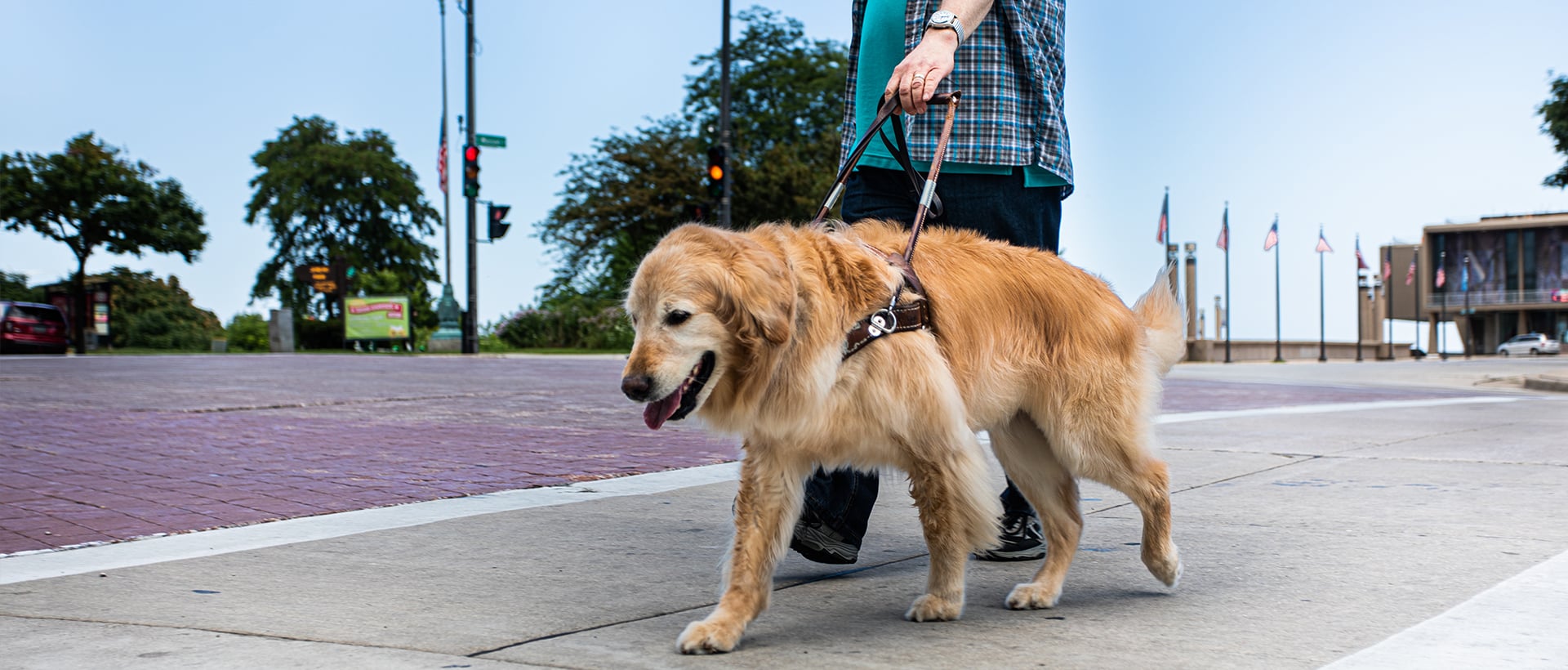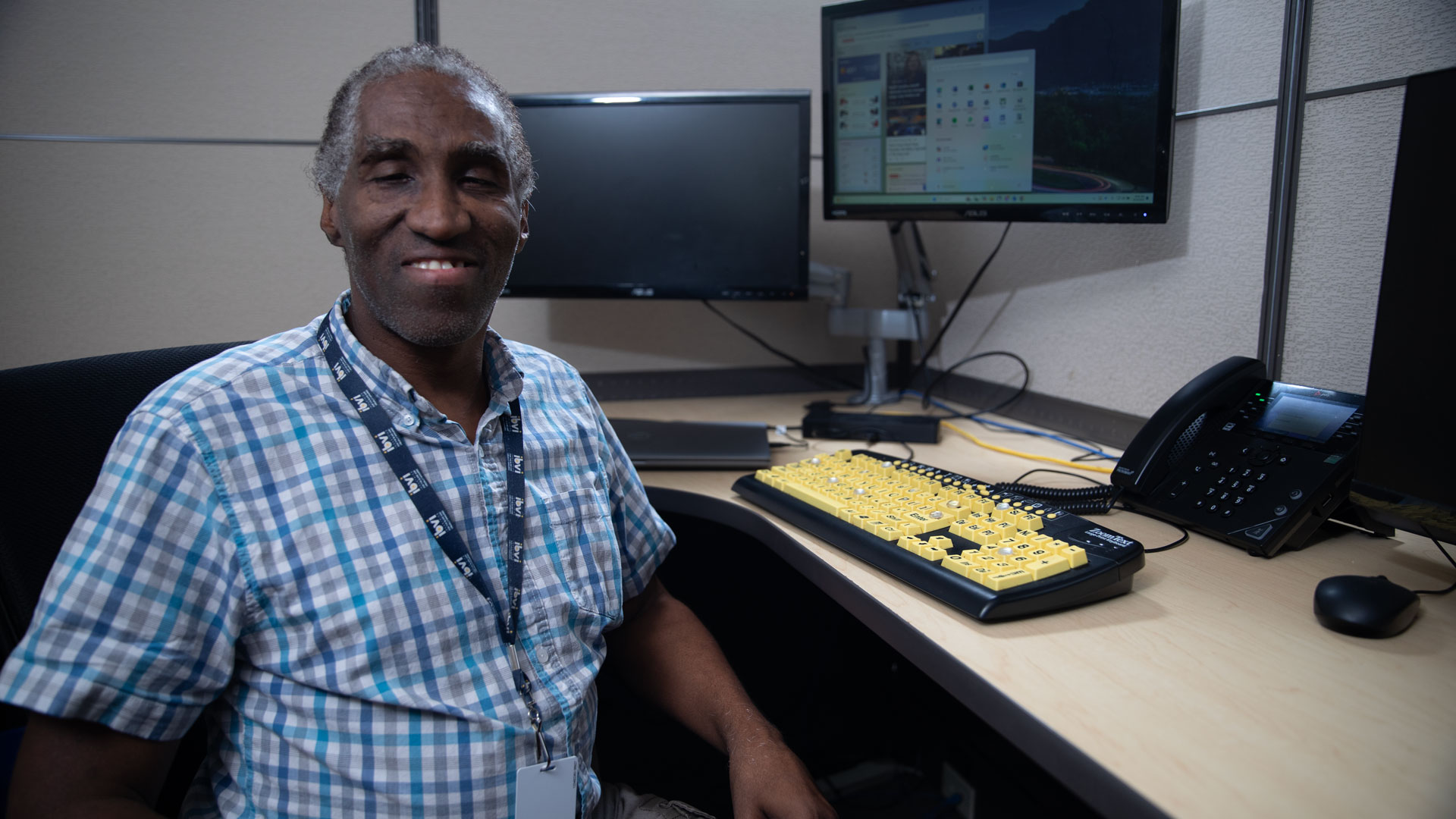Guide dogs are a key player in the lives of many of our employees at Industries for the Blind – Milwaukee. Beyond the companionship that the average dog provides, service dogs provide their masters with the special gift of independence, allowing them to lead normal, productive lives.
Anyone who has witnessed a service dog in action can’t help but notice the special skill set they possess, but how do owners go about obtaining service dogs? What sort of training do canines actually go through in order to become a guide dog? We will break it down for you.
Guide dog schools
Service dogs come from guide dog schools, such as The Seeing Eye. The majority of guide dog schools are non-profit organizations that provide their dogs at little to no cost. The majority of these organizations don’t simply train dogs, they handle everything from breeding and placement of retired dogs into forever homes, to training handlers (owners) on how to work with their service dog.
Traits of guide dogs
Most guide dog schools use German shepherds, Labrador retrievers and golden retrievers, as such breeds tend to be quite intelligent, obedient and friendly. While dogs are carefully bred, not every pup is selected as pick of the litter.
Service dogs should possess many traits, including intelligence, obedience, good memory, attention to surroundings, willingness to learn, and ability to concentrate. If a dog exhibits signs of aggression, nervousness or reacts negatively to other animals, the dog will be cut from the program. Guiding Eyes For The Blind says only 80 percent of their dogs make the cut and earn the title of “guide dog” – the rest are carefully placed into loving homes.
The training process
Guide dog schools work with carefully selected and highly trained puppy raisers, who train the pups in the early stages of their life. The raisers ensure they’re well-cared for, socialized and accustomed to basic commands to sit, stay and walk properly on a leash. When the puppy is ready to enter training (typically after 14 months), the dog returns to guide dog school and begins a formal training program, providing he meets the proper criteria. Again, not all pups pass the muster, and 50 percent of dogs are cut at this point.
Official guide dog training lasts roughly four months. Like traditional obedience training, guide dogs are trained on a reward system to encourage good behavior. Guide dog trainers focus on praise as a reward instead of treats as these could lead to the dog being distracted around food.
In addition to the basics, guide dogs must learn how to efficiently:
- Lead their handler in a straight line from point A to point B
- Stop for stairs, curbs and other changes in elevation
- Stop for and navigate obstacles both in their path and overhead
- Assess potential dangers before crossing a street
According to Guiding Eyes for the Blind, only 72 percent of dogs that made the initial cut into the training program make it to graduation day.
How a guide dog is paired with a handler
Once a guide dog has successfully made it through the training process, they’re ready to be matched with their new master. This stage of the process focuses on the guide dog’s new owner. Before a guide dog is placed with a handler, the individual must fill out an application that assesses their lifestyle and needs then meet with an instructor. In order to ensure success, guide dog and handler are then matched up based on needs and personality.
At this stage, the handler will then undergo a training program that helps them get acquainted with their new guide dog. If it is their first dog, handlers will go through a four week training program, and will need to go through another three week program each time they acquire a new guide dog.
As you can see, the process of raising, training and acquiring a guide dog is one that is highly extensive. While service dogs work hard to aid their handlers, they are able to enjoy an amazing perk that most dogs never get to experience: the ability to walk alongside their handler throughout life and truly become “man’s best friend”.


